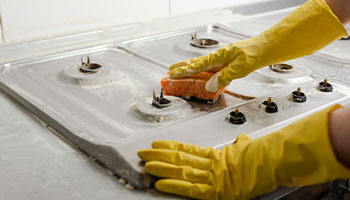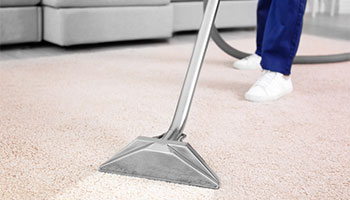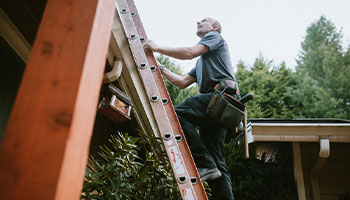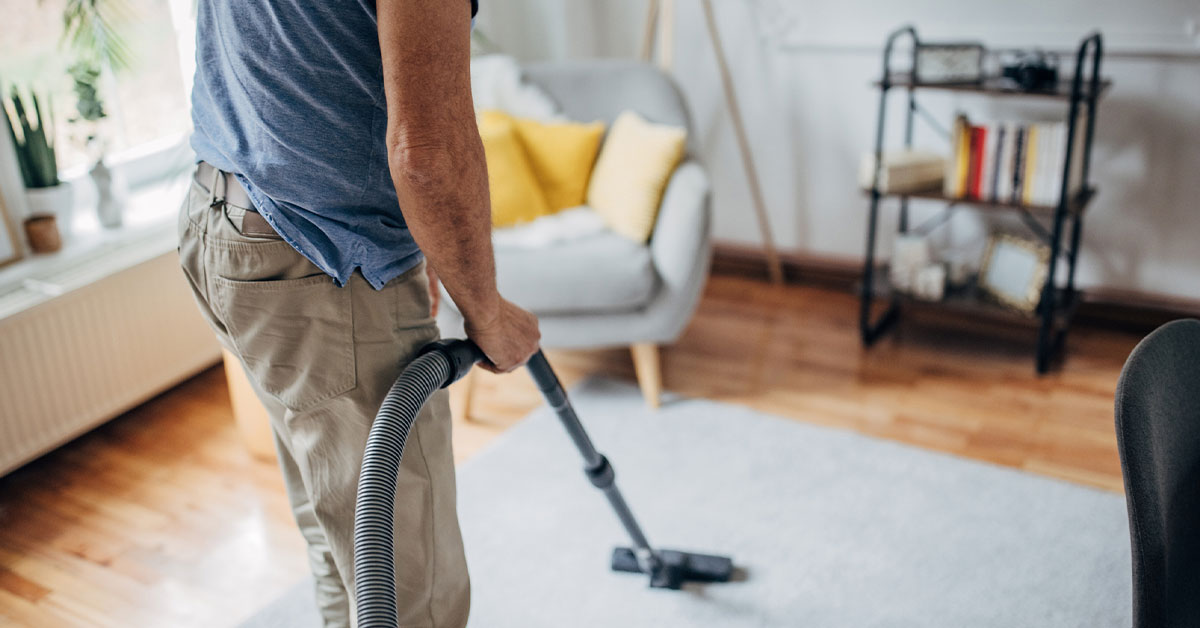There’s nothing more rewarding than hunkering down and giving your home a deep spring cleaning after a long winter. Unlike a routine weekly clean, a well-executed spring cleaning can provide peace of mind and an organized home. It can also help you prevent having to file a home insurance claim due to old equipment, misplaced valuables, or damaged structures. If you have a free weekend, here’s a spring-cleaning checklist that you can follow to ensure that your home is clean and free of any hazards. Ready, set, mop!
Spring Cleaning Checklist for Homeowners
Starting a deep spring clean can sometimes feel overwhelming. Where should I start? What should I focus on? To help you maintain your sanity, we recommend dividing your home into sections and concentrating on one at a time. Here are just a few key areas outside and inside your home that are worthy of your attention.
The Kitchen
Exhaust hood: When cleaning your kitchen, you may be shocked by how much grease has settled on your exhaust hood. However, this is an area you don’t want to forget to wipe down, as it can be a source of many unpleasant odors in your kitchen.

Stainless steel appliances: Do you remember when you gave your stainless steel appliances a good scrub? If not, then it’s time to give them some love. Yes, the brilliance of stainless steel is what makes them beautiful, but achieving that shine takes some work. Most grocery stores sell stainless steel cleaners that make cleaning easy, but you can always create a home mixture with a bit of vinegar and water. However, always clean with the grain to prevent scratches, and never use abrasive cleaners.
Dishwasher: If you want your dishes to come out of the dishwasher clean and grease-free, you’ll need to give your dishwasher routine cleaning. First, remove any food bits from the bottom of the machine. In the future, remove all food material for your plates before placing them in this dishwasher to spare yourself the additional chore when cleaning. Next, you’ll want to run a cycle using a special cleanser made for your dishwasher, as advised by the manufacturer. If unsure which cleanser to buy, search your make and model online or contact the manufacturer directly.
The refrigerator: Use this time to give your fridge a deep clean, both inside and out. This will keep your fridge running smoothly and help keep your food smell fresher. Use a box of baking soda to absorb any new smells for added odor protection.
Other key areas to remember: In addition to these basic areas, remember to tackle other aspects of your kitchen, including your oven, cabinets, utensils, and sink. Use spring cleaning to remove old cans, utensils, or even pots you no longer need. This will help you declutter your home while giving it a good clean.
Floors
Wood floors: If you have wood floors, take the time to condition them with specialty wood floor products. However, be sure to check for dyes when using a new product. You should only use a product with dye if you’re hoping to change the tint of your wooden floor. A good rule of thumb is to use clear wood conditioners every month and sealants on an annual basis to prevent damage. Before sealing your floors, you’ll need to clean them thoroughly. Next, apply the sealer to the floor and use a mop or rag to spread the product across your floor. Once the sealer has dried, buff the area using a clean, dry rag. Work alongside the grain of the wood and make sure all the areas with sealer are sufficiently buffed.

Carpets: It’s recommended that you have your carpets professionally washed at least once a year. You can also rent a carpet cleaner from your local hardware store and do the job yourself. The benefit of renting a carpet cleaner is that you can easily do a second wash if the first wash doesn’t suffice, especially in an area that experiences a lot of foot traffic.
Tiles: To clean your tiles, first remove any dirt or debris with a dust mop or vacuum before applying any water or cleaner. This will ensure that there aren’t any materials that will scratch your tiles as you clean them. To clean your tiles, you can use a simple water and dish soap solution to break down any grease and dirt without leaving behind a residue layer. In addition, you can also use vinegar and water solution to disinfect, clean, and deodorize your tiles. To do this, combine ¼ cup of white vinegar with two gallons of warm water, mop the floors, and let it sit for a few minutes before moping again to rinse the solution. Finally, use a soft microfiber cloth to buff the floors.
Other Areas to Check Inside of Your Home
HVAC filters: Spring cleaning season is a great time to double-check your home’s HVAC filters. Most manufacturers recommend changing these filters once every three months or so. This will help improve the air quality in your home. As a bonus, consider having your HVAC system inspected or cleaned every year or two before peak seasons such as winter or summer.
Dryer vents: If you haven’t cleaned out your dryer vents recently, you should use this time to do so. According to the National Fire Protection Association, laundry machines cause around 16,000 fires annually, with 26% directly caused by dust, fiber, or lint. Even if you clean out the lint filter between drying loads, you don’t want to forget to clean out your exhaust vents.
Smoke alarms: As you’re cleaning your home, test and replace your smoke alarm batteries. Regularly testing your home’s systems that alert you of problems is key to preventing homeowners insurance claims. If you have carbon monoxide detectors in your home, be sure to check those, too.
Plumbing: Looking for signs of water damage throughout your home is important regardless of the time of year. If left untreated, small leaks can slowly become expensive problems if left alone for long periods. As water damage spreads, it can also lead to mold and structural damage concerns, which can be costly issues to fix. We recommend you visually inspect for signs of water leaks in your bathrooms, sink areas, washing room, and anywhere else plumbing can go wrong.
Outside of Your Home

Your roof: It’s essential to do a visual roof inspection after winter, as harsh weather can often cause shingles to become loose or damaged. If you can safely access your roof, clear off any debris that may have blown over and look for signs of damage. If you can’t access your roof, you can also look for signs of leaks or water damage in your attic to detect any problem areas. Should there be any problems, consider hiring a professional to get a proper diagnosis and repair scheduled for your roof.
Windows: Inspect your home’s windows for any signs of leaks, especially around the edges where sealant or weather stripping may have begun to degrade. Fixing any sealant issues will not only improve your comfort level but also help improve your home’s insulation and energy efficiency.
Cleaning your gutters: Many homeowners don’t know that cleaning their gutters can help them prevent costly repairs. Clogged gutters could lead to expensive problems such as water damage, insect infestations, mold, and even foundation problems if water seeps down and freezes in their foundation.
Trim your trees: Older tree branches can severely damage a home, especially during a harsh storm. For example, old branches can break off and fall onto your home on windy days, causing damage. Additionally, branches in contact with your home’s structure can damage the exterior due to constant friction. In drier climates, overgrown vegetation can even serve as a fire risk. Depending on the size of the trees on your property, you may need to hire a professional to remove any overhanging branches safely.
Keep Your Home Protected with Homeowners Insurance
Carrying sufficient homeowners insurance is valuable whether you’ve just moved into a new home or have lived in the same location for years. Your home insurance policy covers more than just your home’s physical structure—it also covers your personal belongings and provides you with liability protection in the event of an accident. But just like with any other insurance type, it’s crucial that you regularly review your coverage to ensure you have the ideal combination of coverage and price.
At AIS, we have over 55 years of experience helping our customers find and secure insurance policies that work best for them. Our insurance specialists are ready to help you find reliable homeowners insurance no matter where you live. To learn more about the coverages available, contact us at (888) 772-4247 or start your quote online.
The information in this article is obtained from various sources and is offered for educational purposes. Furthermore, it should not replace manuals or instructions provided by the manufacturer or the advice of a qualified professional. No warranty or appropriateness for a specific purpose is expressed or implied.


